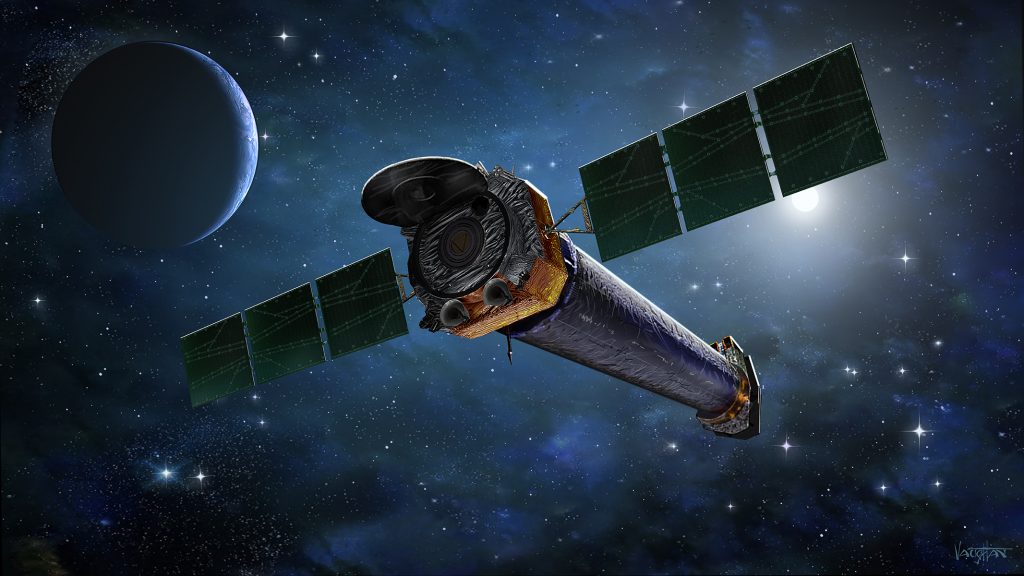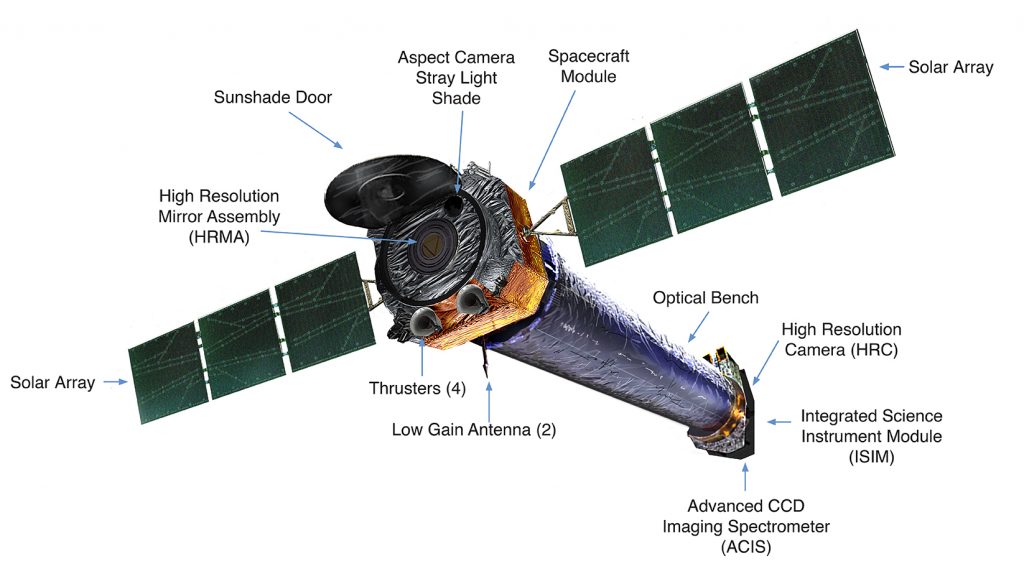NASA’s Chandra X-ray Observatory (CXO), which was launched and deployed by Space Shuttle Columbia on July 23, 1999, is the most sophisticated X-ray observatory built to date. During more than 20 years, Chandra observed X-rays from high-energy regions of the universe, such as the remnants of exploded stars and jets of matter ejected from supermassive black holes in the dense central regions of galaxies.
Chandra’s improved sensitivity can make possible more detailed studies of black holes, supernovas, and dark matter and increase our understanding of the origin, evolution and destiny of the universe.

Credits: NASA/CXC
Reference:
The Chandra telescope system consists of four pairs of mirrors to capture the X-rays from astronomical sources and their support structure.
The Science Instrument Module (SIM) consists of four scientific instruments:
- Two cameras: ACIS (Advanced CCD Imaging Spectrometer) and HRC (High Resolution Camera). They provide information about the incoming X-rays, such as their number, position, energy and time of arrival.
- Two spectrometers: LETG and HETG (for Low and High Energy Transmission Grating) to provide detailed information about the X-ray energy.

Credits: NASA/CXC